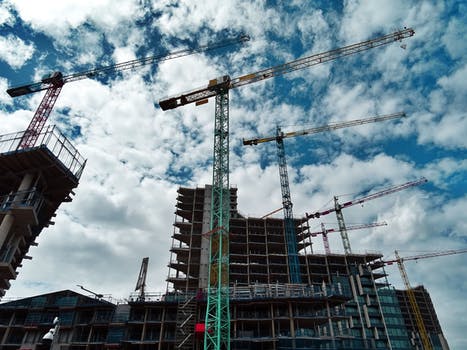Some of our clients are in construction therefore we are often made aware of early trends in that industry. Taken together with client information provided to us from other areas/industries, insights can be gained into what is happening in the national economy.
Construction is a broad industry encompassing the building, maintaining, and repairing structures. Construction also includes general contractors engaged in heavy construction other than buildings, such as highways and streets, bridges, sewers, railroads and flood control projects and marine construction.
We also include special trade contractors who undertake activities that are specialized either to building construction, including work on mobile homes, or to both building and non-building projects. This includes items such as electrical work, plumbing, etc.
Sometimes the formal definition of this industry includes drilling and solid mineral exploration though we usually include those industries in a different segment called “Energy”.
This can be a hazardous industry. Construction workers engage in many activities that expose them to serious dangers such as falling from rooftops, unguarded machinery, being struck by heavy equipment, electrocutions, asbestos and so on.
Like other industries, labor shortages are a looming problem. As of 2017 about 200,000 construction jobs were left unfilled across the U.S., according to the Bureau of Labor Statistics.
Construction spending and starts are expected to remain strong in 2018, but again the amount of growth is forecast to be a bit more subdued.
Construction forecasts for 2018 is a 4.8% increase over 2017 to about $770 billion. Commercial construction (offices, parking garages and transportation terminals) is expected to have a 12.4% increase in starts next year with conservative growth out through 2021.
Industrial, including manufacturing facilities and warehouses, is expected to see a 5.6% decrease in 2018 after seeing a 22.8% increase in 2017. Retail construction is expected to decline another 2.8% in 2018 after experiencing a 16.5% drop in 2017.
Private residential will see the most growth at 6% to 9%. There has been ten years when housing starts have been less than the 1.4 million. If housing ever really gets going, it’s going to drive the economy for years to come.
The biggest uncertainty will be public construction spending. That could decline. A bright spot in public is spending on education facilities.
The construction industry is bracing for a dramatic reduction in workforce. Various trade groups found that their members believe there is a shortage in skilled trades. Members are unable to find professionals such as supervisors, estimators, and engineers.
Technology is starting to play more of a major role in the industry. According to one report, on average, 98% of the largest construction projects are over budget. So even the slightest improvement in efficiency could result in huge savings.
Robotics may offer the ability to reduce labor costs. Construction is a labor intensive industry. The open and uncontrolled nature of the average construction site makes it difficult to use robotics. But some trades are so repetitive and labor-intensive that the use of robotics not only reduces costs but also increase safety. Look for more use of robotics in construction in the future.
Drone technology can be used for site analysis and monitoring of construction progress. Drones allow the mapping of a site and can create both two and three dimensional images.
Digital management and collaboration tools make communication between various contractors and workers more efficient with less error. Some tools offer a centralized storage of all project related files.
Periodically, I will continue to update my readers on trends we are seeing in various industries.



